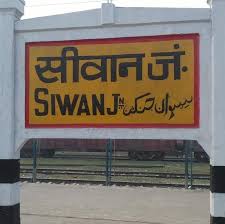
Siwan, located in the Indian state of Bihar, serves as both a city and nagar parishad, functioning as the administrative hub for Siwan district. Positioned in the western part of the state, Siwan was initially a sub-division of Saran district and, historically, part of the Kosala Kingdom. Throughout its evolution, Siwan has played a notable role in various historical events.
In the 8th century, Siwan was integrated into the Banaras Kingdom, and by the 13th century, the Muslim influence had reached the region. Notably, Sikandar Lodi ruled Siwan in the 15th century, and during the 17th century, Dutch and English entities entered the scene. The Battle of Buxar in 1765 marked Siwan’s inclusion in Bengal.
Siwan has a rich history intertwined with significant movements, including its involvement in the 1857 Independence Movement. The region is renowned for its resilient “Bhojpuries,” known for their martial arts prowess and physical endurance. They contributed significantly to Babu Kunwar Singh’s cause, and during the anti-pardah movement in Bihar, Sri Braj Kishore Prasad from Siwan played a pivotal role.
Key figures from Siwan who played crucial roles in India’s independence include Dr. Rajendra Prasad, Maulana Mazharul Haque, Shri Mahendra Prasad, Dr. Sayyad Mohammad, Shri Braj Kishore Prasad, and Shri Phulena Prasad. The Quit India Movement saw the martyrdom of Uma Kant Singh from Narendrapur.
In the realm of literature and activism, Pandit Rahul Sankritayayana initiated the Peasant Movement in Siwan from 1937 to 1938. Mahatma Gandhi and Madan Mohan Malviya visited Siwan during their visit to Champaran, with Gandhiji spending a night at Zeradei in Dr. Rajendra Prasad’s house.
Siwan’s historical significance is well-preserved, with the chowki where Gandhiji slept during his visit still intact at Zeradei.
For more information, you can refer to the following citations:
